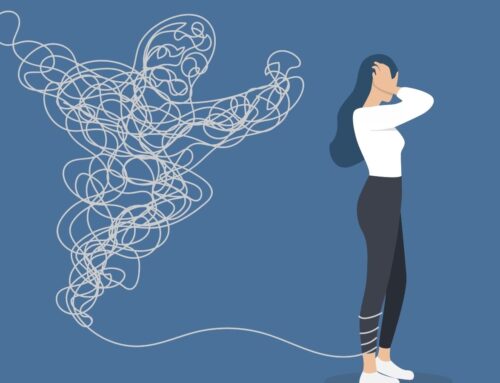Eating disorders are complex medical and psychiatric illnesses that are more common than we once believed. Newer studies point to rates of 5.2% among girls ages 12-20 for anorexia, bulimia, or binge eating disorder. When researchers included nonspecific eating disorder symptoms, that number rose to 13.2% (Stice et al., 2010). It is thought that approximately 20 million females and 10 million males in the US alone will have a clinically significant eating disorder at some point in their lifetime. Importantly, eating disorders can lead to a host of physical, emotional, and social difficulties that have a lasting and sometimes even life-threatening impact.
In order to achieve recovery, professional help from therapists, psychiatrists, and nutritionists is often needed. Many times however, people suffering from eating disorders are hesitant to enter treatment, which is where friends and family come in. Support and encouragement from loved ones to seek professional help can make a huge difference, but how do we know when to step in?
Many of us have heard of, and might easily notice some of the classic signs of an eating disorder, including significant weight loss or weight gain, frequent negative comments about one’s body weight/shape or size, eating very little or nothing at all at meals, over-exercising, or pre-occupation with losing weight. But noticing that a loved one is struggling can be harder that you think. We often assume that someone must be overweight in order to have an eating disorder, but many people of “average” or higher weight suffer just as much. The problem is that individuals with eating disorder symptoms often feel intense shame, leading them to become very adept at hiding their feelings and behaviors. This secrecy can make it difficult for us to notice that our child, friend, or family member is suffering. Here are some indicators (beyond the one’s that many of us typically look for) that may be a sign of trouble:
Frequently checking in the mirror for perceived flaws
Not eating in public or with others
Disappearance of large amounts of food in short periods of time (lots of empty wrapper and containers)
Consistently making excuses to avoid mealtimes or situations involving food
Unusual swelling of the cheeks or jaw area
Preoccupation with food
Hoarding or hiding food
Disappearing after eating (often to the bathroom)
Unusual food rituals (cutting food into small pieces, chewing each bit an unusually large number of times, eating very slowly)
Frequent fad diets (cutting out entire food groups, no sugar, no carbs, no dairy, veganism/vegetarianism)
Obsessive interest in cooking shows or collecting recipes
Avoiding certain foods
Withdrawal from usual friends and social activities
Making excuses for not eating
Cooking elaborate meals for others, but refusing to eat themselves
Eating strange combinations of foods
Wearing bulky, large clothing or layers to hide weight loss or body
Flat mood or lack of emotion
Irritability
Sleep problems
Feeling cold all the time
Difficulty concentrating
Stomach aches or other non-specific gastrointestinal complaints
Dental problems, such as enamel erosion, cavities, and tooth sensitivity
Mood swings
Hyperactivity or restlessness (unable to sit down)
Rigidity in behaviors and routines – extreme anxiety if these are interrupted
Excessive, rigid exercise regimen – despite weather, fatigue, illness, or injury
If you notice these symptoms in your child, family member, or friend, it’s a good idea to start a conversation and encourage them to seek professional help.
For more information, visit some of the websites below:
www.nationaleatingdisorders.org
Stice E, Mar CN, Shaw H, and Jaconis M. (2010). An 8-year longitudinal study of the natural history of threshold, subthreshold, and par al ea ng disorders from a community sample of adolescents. Journal of Abnormal Psychology, 118(3):587-97.





